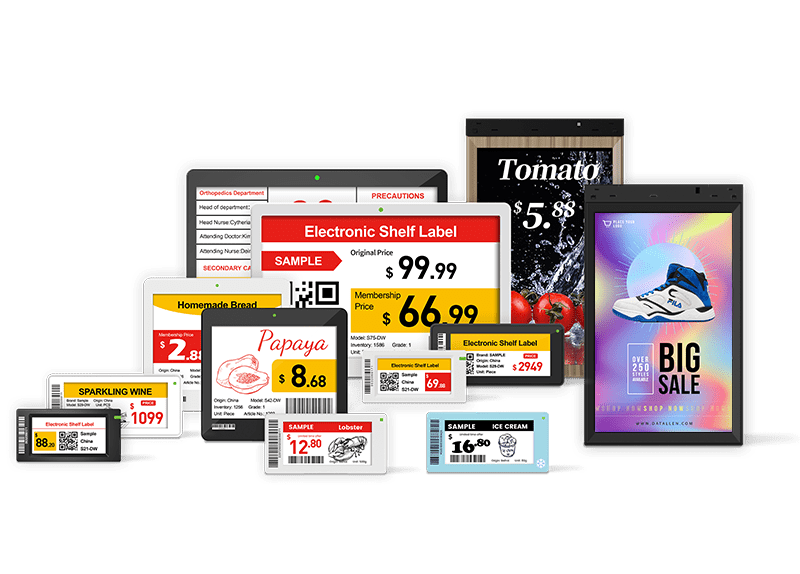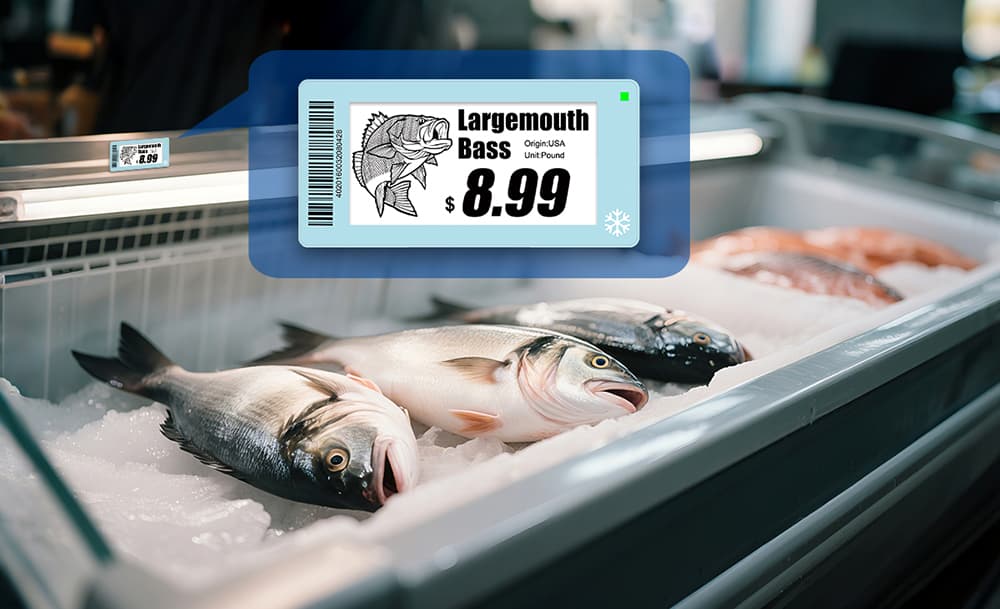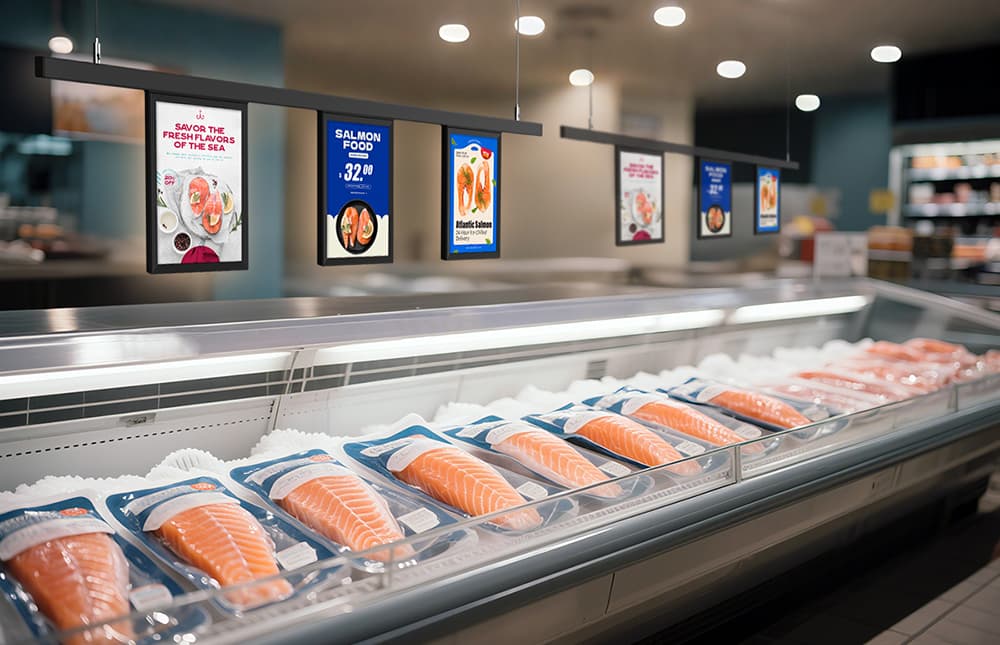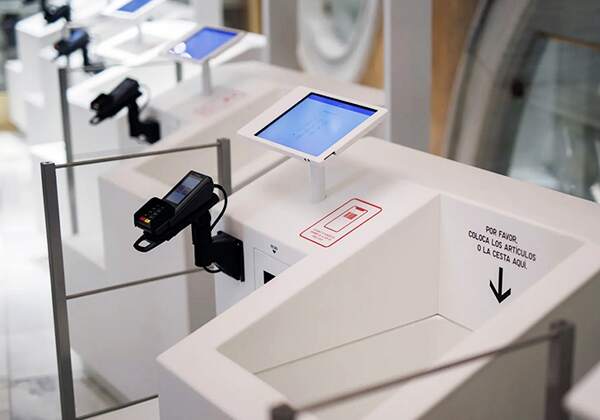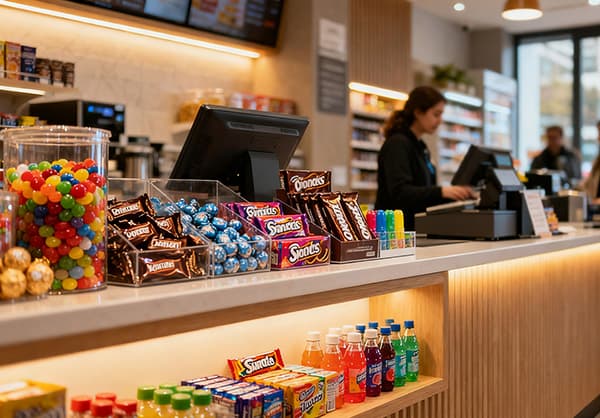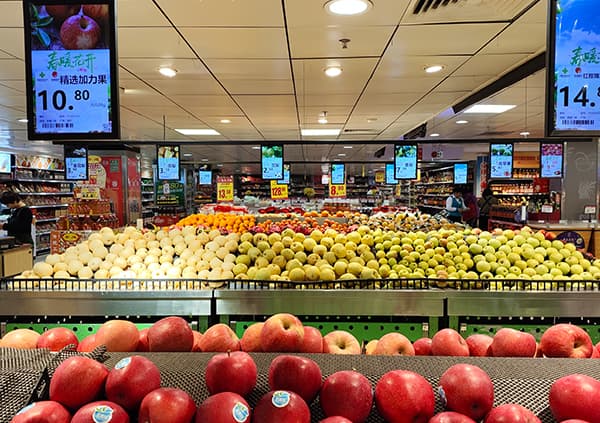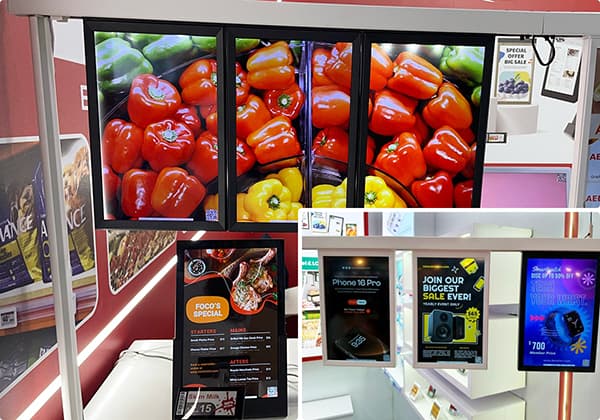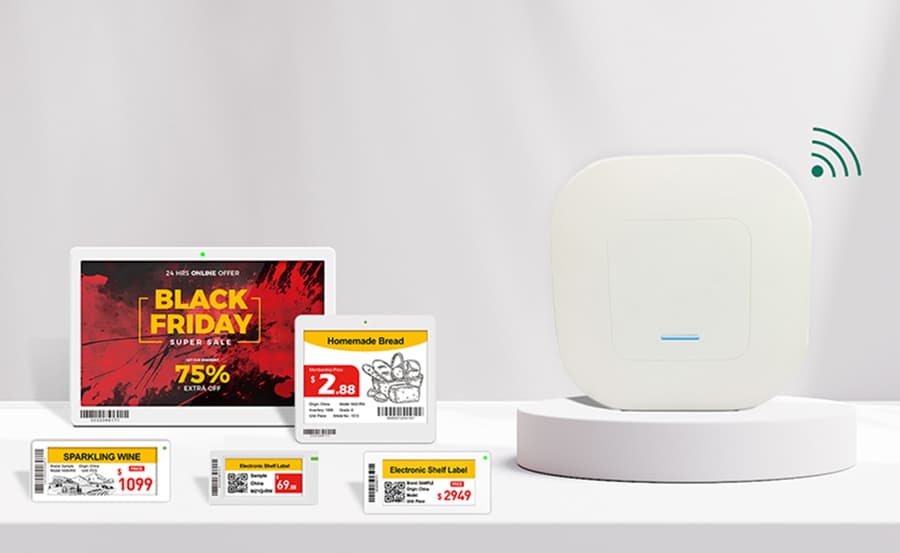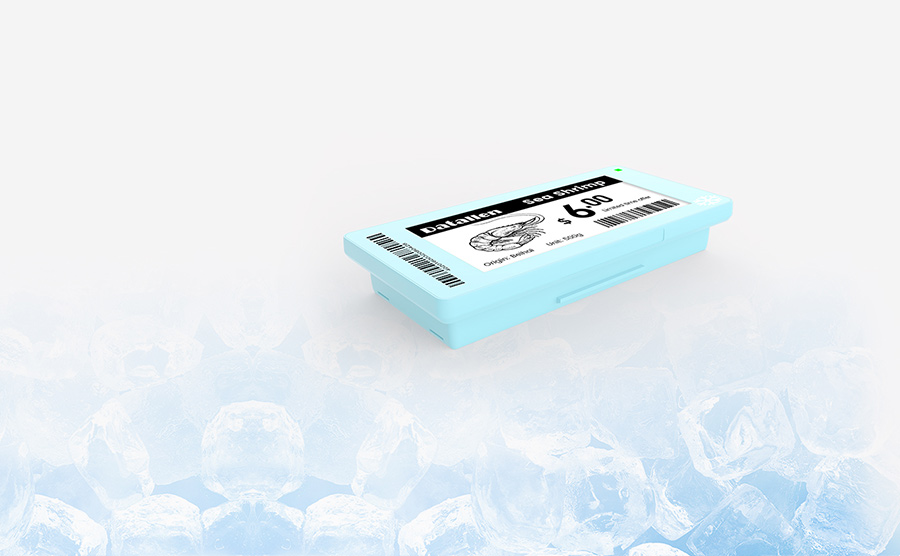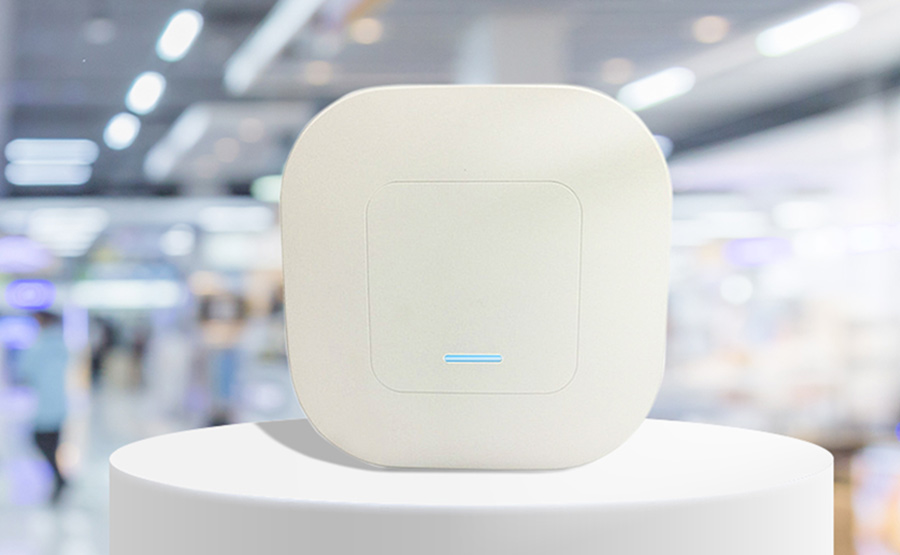Introduction: The New Face of Fresh Food Supermarkets
Across the globe, consumers are demanding fresher, healthier, and more diverse options in their local fresh food supermarkets. With frozen and chilled items now taking up an increasingly larger share of grocery store shelves, retailers are under pressure to improve product freshness, operational efficiency, and merchandising appeal. The pandemic further highlighted the need for safer, more adaptable, and digitally-driven store management systems.
As fresh foods grocery trends evolve, innovation in display technologies and retail automation has become vital for ensuring competitiveness—especially for any frozen food store trying to balance cost-efficiency with exceptional customer experience.
Common Challenges Faced by Frozen Food Stores
Frozen food retail presents a unique set of challenges:
Energy Consumption & Display Inefficiency: Frozen and fresh products deteriorate quickly without optimal refrigeration. For example, seafood loses value rapidly once it’s no longer live, forcing retailers to discount aggressively within hours.
Limited Space, Weak Visuals: With compact freezer sections, creating engaging displays without compromising capacity is a constant struggle.
Labeling Frustrations: Traditional paper tags are prone to moisture damage and human error, particularly with meat and seafood, where prices may fluctuate 3–5 times per day. Frequent replacements also slow operations and contribute to waste.
Temperature Control & Inventory Strain: With various temperature zones for fresh, chilled, and frozen items, inventory gaps and overstocking can occur simultaneously without proper monitoring.
Low Promotion Efficiency: The sheer number of SKUs can make it difficult for staff to update signage consistently and run dynamic promotions effectively.
How to Display Meat in a Fresh Food Supermarket?
Meat display strategies in a fresh food supermarket must prioritize temperature control, visual clarity, and information accuracy. Merchandisers often use display meat cases such as open coolers, embedded chill cabinets, and suspended racks for flexibility.
Best Practices:
Lighting: Red-toned lights enhance the freshness of red meat; cool white lights make seafood look crisp and clean.
Storytelling with Screens: Advertising digital displays can show origin stories—like salmon being harvested from icy waters—to inspire customer trust.
Modern Freezer Design: Anti-fog glass doors and slim bezels boost product visibility by over 50%.
Digital Shelf Labels: E-ink ESLs present the cut, source, price, and promotional info, even in high-moisture environments.
Frozen Food Display Ideas That Attract and Convert
Q: What is the best way to display frozen products in a grocery store?
Categorization is key. Separate zones for poultry, fish, frozen snacks, and desserts make it easier for shoppers to navigate and for store staff to maintain.
Eye-Catching Screens: Install advertising digital displays atop freezers or in island placements.
Engaging Content: Use video loops, animated promotions, or recipe ideas to spark impulse buys.
Flexible Templates: LCD signage can show one or multiple products per screen and switch layouts dynamically. This boosts flexibility during seasonal promotions or clearance events.
Tips For Merchandising in Your Butcher's Shop or Supermarket
Digital shelf label advantages:
Real-Time Price Updates: If seafood freshness declines, prices can be changed across all stores in seconds—capitalizing on a 2-hour promotional window and cutting loss rates by 15%.
Operational Efficiency: With auto-synced ESLs, stores save an average of 3 labor hours per day, freeing up staff to provide value-added services like recipe advice.
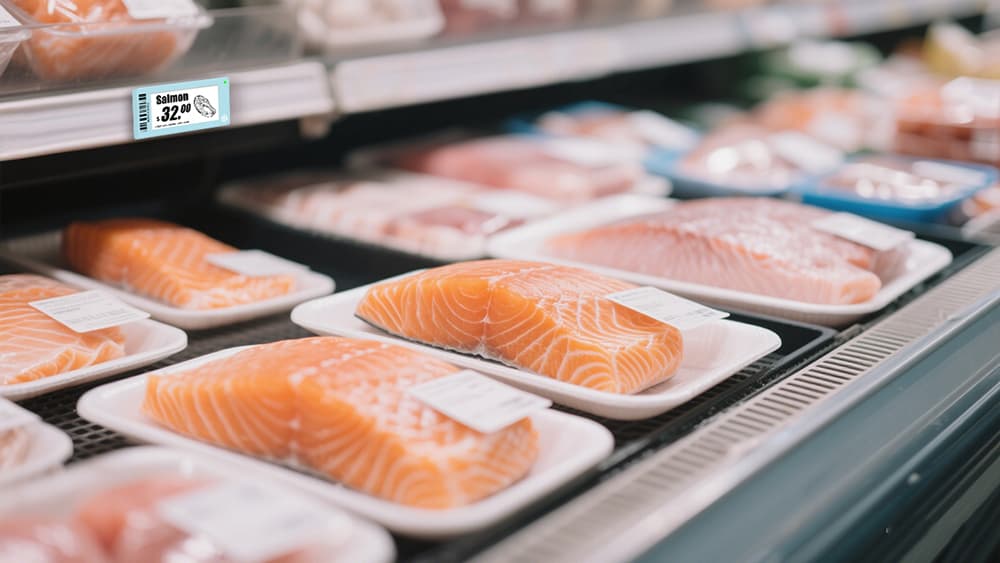
Immersive LCD Screens Experiences:
Split Screens: Top half can play short recipe clips, while the bottom half shows pricing, origin, and QR codes for traceability.
Dynamic Syncing: When inventory is low, screens can automatically switch to highlight alternative promotions—boosting footfall by up to 30% in chilled sections.
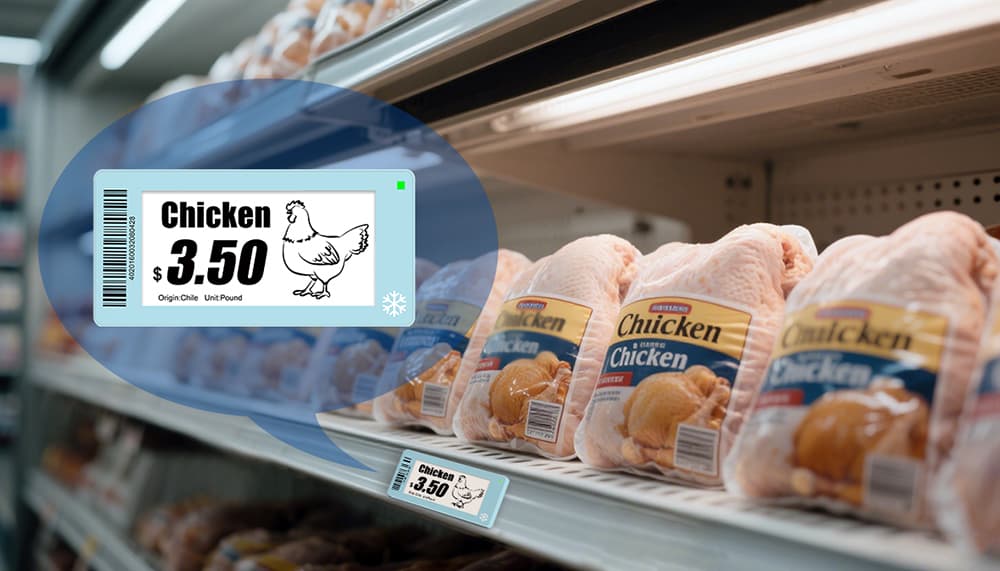
Regulatory & Profit FAQs for Shop Owners
Q: How much does a butcher shop owner make a year?
Depending on region, scale, and specialization, U.S. butcher shop owners can earn between $40,000 and $100,000 annually. Those integrating value-added services or niche products (e.g., halal cuts or gourmet sausages) tend to outperform peers.
Q: Do you need a license to open a butcher shop or fresh food supermarket?
Yes. In both the U.S. and Saudi Arabia, businesses require health permits, refrigeration compliance, and food safety certifications. Local licensing also covers waste disposal, temperature monitoring, and traceability standards.
Cold Chain Compliance: What Needs Refrigeration in a Grocery Store?
Q: Which items must be refrigerated in a fresh food supermarket?
Essential cold-chain goods include:
Poultry (≤4°C)
Fish and seafood (Frozen at ≤-18°C)
Cheese, deli meats, dairy, and ready-to-eat items
Q: What are the key refrigeration tips?
Separate raw and cooked items
Allocate specific cold and frozen zones
Calibrate equipment regularly to prevent spoilage
Use data monitoring systems for temperature alerts and inventory analysis
From Manual to Digital: A New Era for Fresh Food Retailers
Digital labels and signage are changing the way grocery stores communicate and compete.
Benefits of Digital Shelf Labels:
Paperless pricing reduces environmental impact
Instant updates accommodate inflation and stock changes
5+ years of battery life means low maintenance costs
Advantages of LCD Signage:
Multi-product displays
Customizable templates
Remote, centralized control for consistent branding
Crystal-clear visuals increase shopper engagement
Together, they support green retailing while optimizing labor and boosting conversions.
Datallen: Powering the Future of Frozen Food Retail
As a global provider of retail digitization solutions, Datallen helps fresh food supermarkets and frozen food stores optimize their performance through smart technology.
Reliable, high-contrast digital shelf labels that thrive in cold and high-humidity environments
Flexible, interactive advertising digital displays to enhance product visibility and drive in-store sales
Upgrade to Datallen’s smart retail suite—where every label saves cost, every display tells a story.
Discover more at datallen.com or email: inquiry@datallen.com
For more insights, check out:
1. Iranian Supermarket with Digital Price Displays
2. Electronic Price Tags Revolutionize a Saudi Butcher Shop
3. China Fresh Food Supermarket
4. Digital Advertising Screen in Supermarket Chain
5. Saudi Convenience Store Electronic Price Tag

